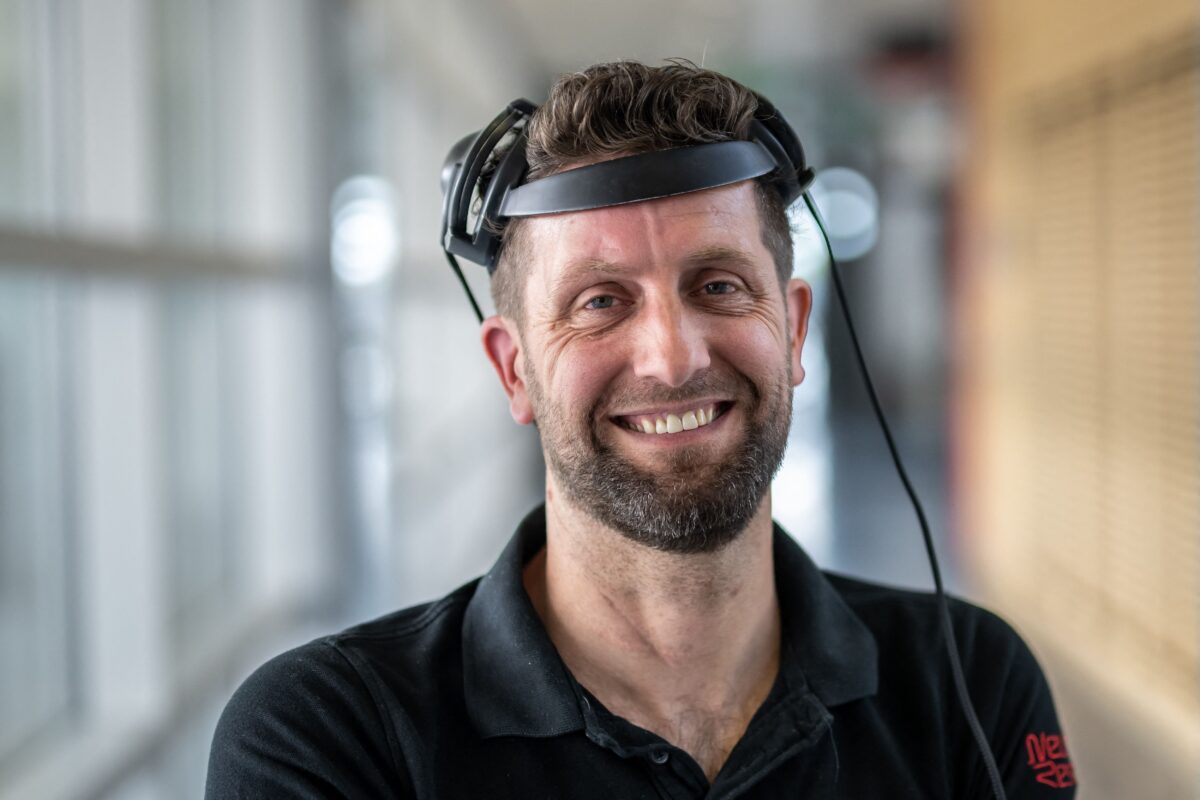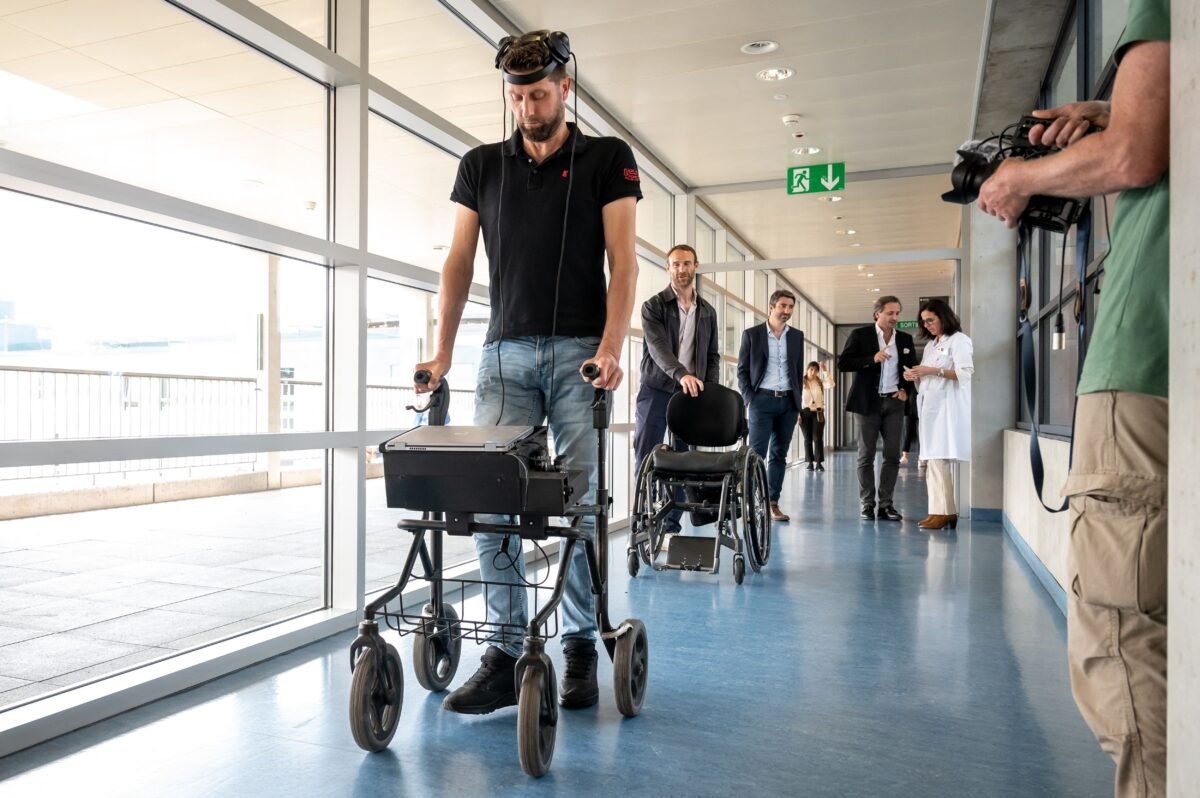Man Paralyzed for 12 Years Walks Again Thanks to Brain, Spinal Cord Implants
A paralyzed man has been able to walk again for the first time in years simply by using the power of his mind thanks to implants fitted in his brain and spinal cord.
Gert-Jan Oskam, a 40-year-old Dutchman, was paralyzed in his legs and partially paralyzed in his arms following a cycling accident 12 years ago during which he suffered spinal cord damage.
He was told he would never walk again.
However, after being fitted with a device called a “brain–spine interface,” Oskam regained the ability to voluntarily move his legs and feet just by thinking about it, according to a study published May 24 in the journal Nature.
He can now stand, climb stairs, and even traverse complex terrains with the help of a walking aid, according to researchers.
“I feel like a toddler, learning to walk again,” Oskam told the BBC. “It has been a long journey, but now I can stand up and have a beer with my friend. It’s a pleasure that many people don’t realize.”
An international team of researchers, led by Dr. Grégoire Courtine, Professor Jocelyne Bloch, and others from the Swiss Federal Institute of Technology in Lausanne, fitted Oskam with the brain–spine interface, which works by creating a direct link between “cortical signals and the analogue modulation of epidural electrical stimulation targeting the spinal cord regions involved in the production of walking,” according to researchers.
How the Device Works
Put simply, the device restored the neurological link between the brain and the spinal cord, which is typically severed during accidents such as Oskam’s.
The device was implanted into Oskam’s skull, meaning it is not visible to the naked eye. When Oskam thinks about walking, the implant detects electrical activity in the cortex, the outer layer of the brain, and sends brain waves wirelessly to a computer that Oskam wears in a backpack.
The information is then transmitted to a pulse generator inserted into his spinal cord, effectively switching on muscles and allowing him to produce specific movements.

Oskam also underwent around 40 rehabilitation sessions using the brain–spine interface, after which he regained the ability to voluntarily move his legs and feet.
Researchers believe Oskam’s movements would not have been possible with spinal stimulation alone and that the training sessions “prompted further recovery in nerve cells” which were not completely severed during his injury.
As well as being able to walk while using the device, Oskam can also walk short distances without the device, provided he uses crutches.
Life-Changing Results for Spinal Cord Injuries
Oskam says the implant has changed his life.
“When I decide to make a step, the simulation will kick in, as soon as I think about it,” Oskam said in a press release. “Last week, there was something that needed to be painted and there was nobody to help me. So I took the walker and the paint, and I did it myself while I was standing.”
While the findings have been welcomed by many, Antonio Lauto, a biomedical engineer at Western Sydney University, Australia, says that a less invasive device would be better suited, noting that one of the implants in Oskam’s skull had to be removed roughly five months after it was inserted owing to an infection.
The researchers said they now plan to make the technology more streamlined. They are also currently recruiting three people to see whether a similar device can restore arm movements.
“There is always a bit of risk of infections or risk of haemorrhage, but they are so small that it’s worth the risk,” Bloch said in the press release.
“The important thing for us is not just to have a scientific trial, but eventually to give more access to more people with spinal cord injuries who are used to hearing from doctors that they have to get used to the fact that they will never move again,” Bloch told the BBC.
Approximately 17,700 Americans acquire a spinal cord injury every year, of which nearly 40 percent are the result of a vehicle accident and more than 30 percent are owing to falls, according to the United Spinal Association.




